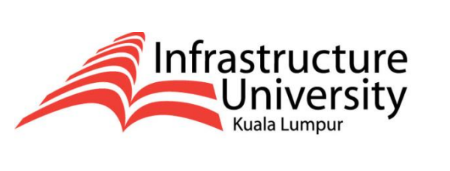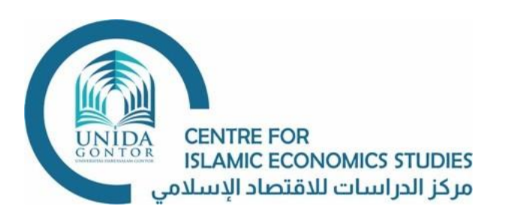The Contribution of Islamic Commercial Banks to Indonesia’s GDP: Evidence from Third-Party Funds and Working Capital Financing
Abstract
The growth of Islamic banking in Indonesia has continued to increase. Yet, its market share remains relatively small compared to conventional banks, resulting in a suboptimal contribution to the national economy. This study aims to analyze the contribution of Islamic Commercial Banks to Gross Domestic Product (GDP) through Third-Party Funds (DPK) and Working Capital Financing (PMK), with Return on Assets (ROA) as an intervening variable. The study employs a quantitative approach using quarterly secondary data for the 2015–2022 period obtained from the Financial Services Authority (OJK) and Statistics Indonesia (BPS). Data analysis was conducted using multiple linear regression and the Sobel test to examine direct and indirect effects. The findings reveal that DPK has no significant effect on ROA, while PMK significantly impacts ROA. Furthermore, DPK and PMK significantly influence GDP, whereas ROA has no significant impact on GDP and does not serve as an intervening variable. These results highlight that the contribution of Islamic Commercial Banks to economic growth is primarily driven by their financing intermediation function rather than bank profitability.
References
Antonio, M. S. (2001). Bank syariah: Dari teori ke praktik. Jakarta: Gema Insani Press.
Badan Pusat Statistik. (2023). Produk Domestik Bruto (PDB) Indonesia tahun 2015–2022. Jakarta: BPS.
Fadhila, A. (2015). Peran pembiayaan perbankan syariah dalam meningkatkan perekonomian masyarakat. Jurnal Ekonomi Syariah, 3(2), 145–156.
Fatmawati, N. (2015). Analisis teori pertumbuhan ekonomi klasik dan relevansinya pada ekonomi modern. Jurnal Ekonomi Pembangunan, 13(1), 55–64.
Gani, M. A., & Bahari, Z. (2021). Islamic finance and real economic growth: Evidence from Malaysia (2007–2019). International Journal of Islamic Economics and Finance Studies, 7(2), 45–60.
Ghozali, I. (2013). Aplikasi analisis multivariate dengan program IBM SPSS 21. Semarang: Badan Penerbit Universitas Diponegoro.
Levine, R. (1997). Financial development and economic growth: Views and agenda. Journal of Economic Literature, 35(2), 688–726.
Otoritas Jasa Keuangan. (2023). Statistik perbankan syariah 2015–2022. Jakarta: OJK.
Otoritas Jasa Keuangan. (2024). Laporan tahunan perbankan syariah. Jakarta: OJK.
Respati, A. (2023). Pangsa pasar perbankan syariah Indonesia masih kecil dibandingkan konvensional. Bisnis.com. https://finansial.bisnis.com
Rizal, F., & Humaidi, A. (2021). Peran bank syariah sebagai lembaga intermediasi dalam mendukung perekonomian. Jurnal Ekonomi Islam Indonesia, 11(1), 25–37.
Sari, N. (2018). Kontribusi sektor perbankan terhadap investasi dan pertumbuhan ekonomi. Jurnal Ekonomi Pembangunan, 6(1), 77–89.
Sebayang, R. (2023). Target pangsa pasar perbankan syariah 20 persen tahun 2023. CNBC Indonesia. https://www.cnbcindonesia.com
Sugiyono. (2010). Metode penelitian kuantitatif, kualitatif, dan R&D. Bandung: Alfabeta.
Sukirno, S. (2019). Makroekonomi: Teori pengantar (ed. revisi). Jakarta: Rajawali Pers.
Suryaningrum, D. (2016). Financial intermediation dan pertumbuhan ekonomi: Peran perbankan di Indonesia. Jurnal Ekonomi dan Keuangan, 4(2), 99–112.
Syahputra, M. (2017). Modal dan pertumbuhan ekonomi: Analisis teori Solow dan relevansinya. Jurnal Ekonomi Pembangunan, 5(2), 88–102.
Unissula. (2013). Pentingnya menjaga kepercayaan masyarakat dalam perbankan syariah. Jurnal Ekonomi Islam, 2(1), 67–75.
Undang-Undang Republik Indonesia Nomor 7 Tahun 1992 tentang Perbankan.
Widyastuti, R., & Arinta, R. (2020). Short and long-term contribution of Islamic banking to economic growth in Indonesia. Jurnal Ekonomi Syariah Indonesia, 10(2), 101–116.
Downloads
Published
Issue
Section
License
Copyright (c) 2024 Fitra Rizal, Haniatul Mukaromah

This work is licensed under a Creative Commons Attribution-NonCommercial 4.0 International License.
El-Barka: Journal of Islamic Economics and Business allow the author(s) to hold the copyright without restrictions and allow the author(s) to retain publishing rights without restrictions, also the owner of the commercial rights to the article is the author.





